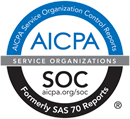Contact Us
- Call Now:(01)773-455-6676
- Sales Email:sales@dedicatedhosting4u.com
- Support Email:support@dedicatedhosting4u.com
- Billing Email:billing@dedicatedhosting4u.com
Close Support
Linux as a server can Make Hosting Service more notable
Linux as a server can Make Hosting Service more notable
The operating system caters a very dependable foundation to the hosted web sites to run with a top most class up-time. The top operating systems aid the remote backup every time required. Linux as a server provides network coding in order that the cyber-terrorists find it hard to break in to the system and the actual data continue to be secluded from the attacks. This serves well from a little scale to big scale enterprises.
Linux as a server can make difference

A proxy machine operates in well in between a client as well as the real machine. It augments the acceleration for the web access as well as empowers for security to the in house web server. The object audience sends wishes to the proxy machine that begin the communication with the accessible machine. The Linux proxy web server is the final choice as it has got you an ideal variety of proxy web server app package at cheaper price. A file web server is deploying to save as well as have the data file for work computer or else resources on a network. It could be a program or procedure or else a computer to handle the credentials concerning the subscribers in a customer web server computer. The Linux file web server deal the stress for files and send them over the network in an extremely secured as well as easier way.
A home web server offer solution for homes having an extensive variety of connected devices by deliver them throughout file sharing centered backup and remote access. The Linux home mechanism is used to escape the numerous versions of the similar file for prolonged term use as well as checks the antivirus as well as firewall status. It as well places the files remotely as well as allows a central print web server to control various print jobs for all visitors. The IT Corporation Red Hat has played a huge role to create Linux web servers a well-liked base for web hosting in the globe. The corporation is promoting the OS by continually adding revise features as well as models. The inexpensive Red Hat Linux has lots of advantage contains high excellence as well as stable-ness by sheltering the PC from the attack throughout the programming of the file machine.
The Linux as a server design is economical while compared to other available operating system. The Linux as a server could help vast web sites without worrying the ordinary of service. Linux is the open source software product as well as it does not require any license fee that reduce the web hosting cost to a great degree. The Linux supported website could efficiently be changed to any windows depending platform. The Linux web hosting allows you to recover all the less costly database method for example My-SQL to reduce the costs further. Also easier to pay scripting language like PHP, Perl increase your website manage by the Linux web server.
Plenty of office now decides the Linux server management to act properly. For a more reputable business environment as well as secured techniques, a amount of web hosting manufacture use the Linux as a server for their hosting necessities. The affordability, protection as well as the additional mechanism made the platform correct for web hosting.
Let’s talk in deeper about the different better Linux distribution available today . That comes with regular update and compatible with other business tools like cPanel .
Ten Linux Distributions and the People Who Use Them
Linux has generated various variants over time as a free and open-source operating system, expanding its wings to embrace a broad community of users. Linux has assured that every group, from desktop/home users to Enterprise setups, has something to be delighted about.
This article examines ten Linux distributions and identifies who their intended customers are.
- Debian
Debian is known for giving birth to well-known Linux distributions as Deepin, Ubuntu, and Mint, all of which have delivered excellent performance, stability, and user experience. Debian 10.5, an upgrade to Debian 10 known as Debian Buster, is the most recent stable release.
Debian 10.5 is not a new version of Debian Buster; rather, it is an upgrade to Buster that includes the most recent updates and new software applications. Security solutions that address pre-existing security concerns are also provided. There’s no reason to get rid of your Buster system if you already have one. Simply use the APT package manager to update your system.
Debian offers approximately 59,000 software packages and supports a wide range of PCs, with each release covering a wider number of system architectures. It aspires for a blend of cutting-edge technology and long-term stability. Debian has three major development branches: Stable, testing and unstable
The stable version, as the name implies, is rock-solid and comes with comprehensive security support, but it does not come with the most up-to-date software programmes. Nonetheless, its stability and reliability make it excellent for production servers, and it also makes the cut for reasonably conservative desktop users who don’t mind having the most up-to-date software packages. Debian Stable is the default installation for most systems.
Debian Testing is a rolling release that contains the most up-to-date software that hasn’t yet been approved into the stable release. It’s a stage in the development of Debian’s next stable release. It’s generally prone to instabilities and is prone to breaking. It also does not receive security fixes in a timely manner. Bullseye is the most recent Debian Testing release.
Debian’s unstable distribution is still in active development. It’s an experimental distribution that serves as an ideal platform for developers who are actively contributing to the code until it reaches the ‘Testing’ stage.
Debian is used by millions of people because of its extensive package repository and the reliability it provides, particularly in production situations.
Debian ISO Images may be downloaded at http://www.debian.org/distrib/.
- Gentoo Linux
Gentoo is a distribution designed for professionals and experts who consider the packages they’re dealing with right from the start. Developers, system, and network administrators fall within this group. As a result, it’s not recommended for Linux newbies. Gentoo is suggested for people who desire a better grasp of the Linux operating system’s ins and outs.
Gentoo comes with portage, a package management system that is also included in other distros like Sabayon and Calculate Linux, which is built on Gentoo and backward-compatible with it. It’s written in Python and uses the ports’ collections notion. BSD-based distros such as OpenBSD and NetBSD provide port collections, which are collections of patches and makefiles.
Gentoo download and installation instructions are available at http://www.gentoo.org/main/en/where.xml.
- Ubuntu
Ubuntu is a prominent Linux distribution that was created and is maintained by Canonical. It is used by beginners, intermediate users, and professionals all around the world. Ubuntu was created with newcomers to Linux in mind, as well as those switching from Mac or Windows.
Ubuntu comes pre-installed with the GNOME desktop environment, which includes common apps like Firefox, LibreOffice, and image editing programmes like GIMP, as well as music and video players like Audacious and Rhythmbox.
Ubuntu 20.04 LTS, codenamed Focal Fossa, is the most recent version. The new Yaru theme, updated design and refined icons, outstanding support for Snap packages, and fractional scaling capabilities that supports high-resolution displays are just a few of the changes and new features.
Ubuntu is the foundation for a number of different Linux variants. Lubuntu 20.04 LTS, Kubuntu 20.04, and Linux Mint 20.04 LTS are some of the Ubuntu 20.04-based versions (Ulyana).
Ubuntu is perfect for desktop users and beginners who are attempting to get their heads around Linux because of its user-friendliness and attractive UI. As they work their way towards a deeper grasp of Linux, they may easily get started with default Apps, as described before.
Ubuntu Studio, which is aimed at multimedia production, is worth highlighting. It is aimed towards people who want to work in the fields of graphics, photography, audio, and video production.
https://ubuntu.com/download/desktop/is where you can get the Ubuntu ISO image.
- Mint is a Linux distribution.
Linux Mint is a widely popular Ubuntu-based community-driven Linux distribution. It has stood the test of time to become one of the most attractive and user-friendly distributions, favoured by both desktop users and professionals. Despite the controversy surrounding the most recent version, Mint 20, which dropped snap support by design, Mint remains a reliable, powerful, and excellent Linux distribution.
Mint 20 is available in three desktop editions: Cinnamon, XFCE, and MATE. It is based on Ubuntu 20.04 LTS. Mint no longer supports 32-bit versions, and only 64-bit versions are available. Linux Mint 20 is based on Linux kernel 5.4, which includes new features such better support for AMD Navi 12, Intel Tiger Lake CPUs, and NVIDIA GPUs. The overall user interface has also been updated, with new icons, new themes, high-resolution backdrop pictures, and a retouched taskbar.
Warpinator, a file-sharing tool that operates in a LAN, and a fractional scaling option for HiDPI monitors to experience clearer and crisper pictures are among the new features. Firefox, LibreOffice, Audacious audio player, Timeshift, and Thunderbird are among the other apps included.
Mint is the go-to Linux distribution for doing day-to-day desktop operations, listening to music, viewing movies, and even gaming on a fast and stable Linux desktop. Mint 20 is a long-term release with support planned until 2025. How to install Mint 20 on your PC is covered in this post.
https://linuxmint.com/download.php – Download Linux Mint ISO Image
- Red Hat Enterprise Linux (RHEL)
Red Hat Enterprise Linux, abbreviated as RHEL, is a Linux distribution aimed towards businesses and enterprises. It’s one of the most popular open-source alternatives to proprietary software like Microsoft. Red Hat is a popular server operating system because of its reliability and regular security fixes, which improve its overall security.
It’s simple to install on traditional servers, virtual environments like VMware and HyperV, and the cloud. Thanks to OpenShift PaaS (platform as a service), a hybrid cloud environment based around Docker containers and managed by Kubernetes, Red Hat has done an excellent job in containerization technology.
RHCSA (Red Hat Certified System Administrators) and RHCE (Red Hat Certified Engineer) are two specialised courses offered by Red Hat that teach and certify system administrators (Red Hat Certified Engineer).
Red Hat and its derivatives, such as CentOS, have traditionally utilised the yum package management. Things have changed now, and RHEL 8 (Ootpa), the most recent version, now utilises DNF as its default package manager. RHEL is delivered through two primary repositories: AppStream and BaseOS.
The AppStream repository (Application Stream) contains all of the software programmes that you want to install on your system, whereas BaseOS only contains apps that are required for the system’s essential operation.
Additionally, the Red Hat developer programme allows you to download and trial RedHat for free.
- CentOS
The CentOS Project is a free operating system developed by the CentOS community with the goal of providing a stable and trustworthy open source ecosystem. CentOS, which is based on RHEL and is free to download and install, is a great alternative to Red Hat Enterprise Linux. It provides customers with RHEL’s stability and dependability while also providing them with free security and feature upgrades. CentOS 8 is a popular choice among Linux users who wish to take use of RHEL’s features.
CentOS 8.2 is the most recent version, and it is the third iteration of CentOS 8. It uses App stream and BaseOS repositories and comes pre-installed with the most recent software packages, such as Python 3.8, GCC 9.1, Maven 3.6, and so on.
CentOS 8 is available for download at https://www.centos.org/centos-linux/.
- Fedora is a Linux distribution.
Fedora has long been regarded as one of the most user-friendly operating systems, thanks to its ease of use and pre-installed apps that help newbies get up and running quickly.
It’s a robust and adaptable operating system designed for PCs and laptops, servers, and even IoT environments. Fedora, like CentOS, is built on Red Hat and serves as a testing ground for the company before moving into the Enterprise phase. As a result, it’s typically utilised for development and learning, and it’s useful for both developers and students.
Fedora has been using the DNF package manager for a long time (and still does), and it provides the most up-to-date and best RPM software packages. Fedora 32 is the most recent version of Fedora.
Fedora Linux may be downloaded from https://getfedora.org/.
- Kali Linux
Kali Linux is a Debian-based Linux distribution built for penetration testing and digital forensics, developed and maintained by offensive security. It includes tools for penetration testing out of the box, such as Nmap, Metasploit Framework, Maltego, and Aircrack-ng, to name a few.
Kali Linux is designed for penetration testers and students interested in learning more about cybersecurity. In fact, Kali offers industry-standard certifications such as Kali Linux Certified Professional and Penetration Testing with Kali.
The APT package manager is used by Kali, and the most recent version is Kali 2020.2. Here’s how to install Kali 2020.2.
Kali Linux may be downloaded from https://www.kali.org/downloads/.
- Arch Linux
Arch Linux is a geeky Linux distribution that is lightweight and versatile, aimed for sophisticated users or Linux specialists who are concerned about what is installed and operating. It allows users to customise or modify the system according to their preferences. In a word, Arch is designed for people who are well-versed in the workings of Linux.
Arch is a rolling release, which means it is always up to date, and all you have to do is update the packages in the terminal. The default package manager is Pacman, and it makes use of the AUR (Arch User Repository), which is a community for installing software packages. The most recent version is 2020.09.01.
Arch Linux is available for download at https://www.archlinux.org/download/.
- OpenSUSE
The OpenSUSE project is a cutting-edge, community-driven project that offers two primary SUSE branches: SUSE Leap is a point release that is intended for desktop users as well as enterprise development and testing. As a result, it’s ideal for open source developers and system administrators.
SUSE Tumbleweed, on the other hand, is a rolling release that includes the most up-to-date software stacks and IDEs and is the closest thing you’ll find to a bleeding-edge distro. Thanks to the availability of up-to-date programmes such as office applications, the GCC compiler, and the kernel, TumbleWeed is a piece of cake for any power user or software developer.
For managing software packages, OpenSUSE relies on the Yast package manager, which is recommended for developers and system administrators.
OpenSUSE Linux is available for download at https://www.opensuse.org/.
Conclusion
Of course, that’s only a small sample of the Linux distributions available, and it’s far from complete. Over 600 Linux distributions exist, with roughly 500 in active development. However, we were compelled to concentrate on a few of the most popular Linux distributions, some of which have influenced other Linux varieties.




